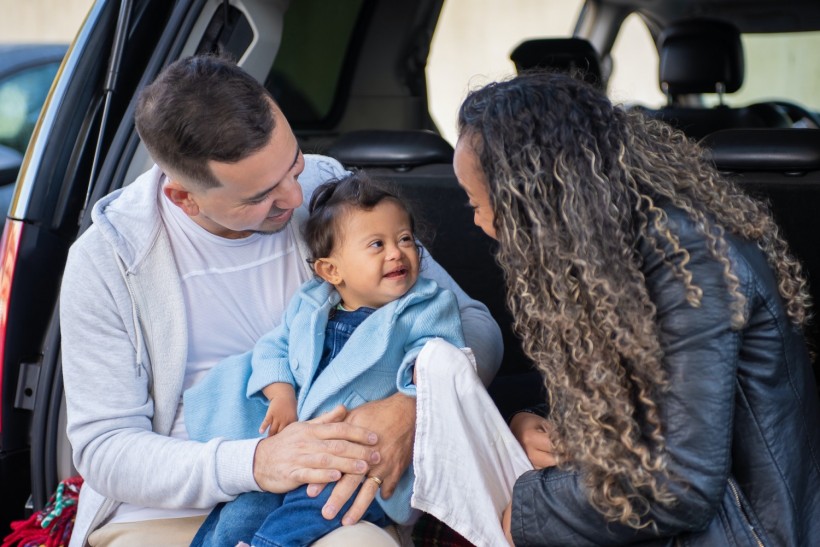Everything New Parents Need to Do to Prepare for Driving With a Baby

You learned to drive years ago; you can probably get from here to there in your car without thinking terribly much about the process. However, there is a significant difference between driving by yourself and driving with a newborn in the car. Babies and toddlers have unique needs in moving vehicles, and to ensure that your family is safe as you travel on the road, you need to be aware of and prepare for those needs well in advance.
Fortunately, this guide should make it easier for you to make the transition from solo driver to family chauffeur.
Buy a Car Seat
If you do nothing else to alter your vehicle or driving habits, you absolutely must do this. A car seat is legally required for any child aged five years and younger, as it helps ensure that your little one is strapped safely and securely with adequate padding to protect their tiny frame.
Experts advise against purchasing a used car seat; padding and straps can become damaged in collisions, making them less functional, and if you are purchasing a car seat from a stranger, you might not be able to determine whether a seat has survived a crash. Even if a seat has not been in an accident, the foams and plastics can degrade over time, so it is best to give your child perfect protection of a new car seat.
All car seats on the market have undergone tests to prove their efficacy in protecting babies and toddlers during vehicle collisions. Still, you might perform your own research to find an option that meets your standards for price, style and safety.
Organize and Protect From Spills
Kids are notoriously messy in the car. Strapped into their seats, they have little opportunity to move and interact with their world, so they happily toss anything and everything onto the seats and floor around them. To prevent the backseat of your car from becoming a chaotic mess, you should put some effort into devising an organizational system for the essentials you will keep in your car.
For example, you might hang a shoe organizer over the back of your driver seat to make it easy to stash snacks, socks, toys, diapers and other essentials for on-the-go baby care. You can also find car organizers that slide underneath seats or strap onto center consoles.
It might also be wise to protect the materials in your vehicle from spills. Children are messy until well into their teens; even the littlest babies can spit up or make other types of messes that might result in stains to your seats and flooring. You might try to layer washable or disposable covers on key areas around your child's car seat.
Invest in Essential Stations
Instead of trying to pack everything you need into your diaper bag right before every car trip, you should stock your vehicle with some essentials. For example, you might fill a small box with diapers and wipes and stash it in your trunk to manage quick and easy diaper changes on the go. You should also have a comprehensive first aid kit somewhere in your vehicle, which should include bandages, antibiotic ointment, a thermometer, scissors and other tools for handling minor medical emergencies when you are away from home.
 (Photo : Kampus Production)
(Photo : Kampus Production)

Schedule Car Trips Appropriately
One of the most difficult tricks for new parents to learn is trip scheduling. No longer can you hop in your vehicle and go wherever you want whenever you want to; you have to keep your baby's schedule in mind. For example, it is usually a bad idea to go somewhere close to nap time, as your little one is less likely to have a full and restful nap in the car seat. Then again, most babies and toddlers do not appreciate being strapped in immediately after waking up from a nap, as they want some freedom to explore their world. Whenever you need to get going somewhere, you need to choose the exact right time of day to make your trip a success.
Learn to Drive Defensively
Defensive driving is what most parents and driving schools strive to teach teens from their very first driving lessons, but young adults often shift away from safe driving habits toward more aggressive behaviors on the road. When you have a little one in your vehicle, driving safely is much more important than driving quickly or efficiently, so you should try to return to those essential defensive driving techniques. You might even consider enrolling in continuous driver safety training to keep your driving skills sharp before and after your baby arrives.
You want your new baby to be happy and healthy, and that means you need to keep them safe on the road. By preparing ahead of time with the right tools and techniques, you can become a better driver for your family.
© 2024 ParentHerald.com All rights reserved. Do not reproduce without permission.
* This is a contributed article and this content does not necessarily represent the views of parentherald.com
